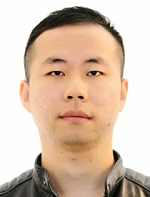讲座人 (Speaker): Guozhang Chen, PhD, the University of Sydney 主持人 (Chair): 余山 研究员,中国科学院自动化研究所 时 间 (Time): 2020.09.10, 14:00 - 15:00 地 点 (Venue): 智能化大厦三层第一会议室

题 目 (Title): Computing by modulating spontaneous cortical activity patterns as a mechanism of active visual processing
摘要 (Abstract)
Cortical populations produce complex spatiotemporal activity spontaneously without sensory inputs. However, the fundamental computational roles of such spontaneous activity remain unclear. Here, we propose a new neural computation mechanism for understanding how spontaneous activity is actively involved in cortical processing: Computing by Modulating Spontaneous Activity (CMSA). Using biophysically plausible circuit models, we demonstrate that spontaneous activity patterns with dynamical properties, as found in empirical observations, are modulated or redistributed by external stimuli to give rise to neural responses. We find that this CMSA mechanism of generating neural responses provides profound computational advantages, such as actively speeding up cortical processing. We further reveal that the CMSA mechanism provides a unifying explanation for many experimental findings at both the single-neuron and circuit levels, and that CMSA in response to natural stimuli such as face images is the underlying neurophysiological mechanism of perceptual “bubbles” as found in psychophysical studies.
参考文献 (Reference)
Chen, G., Gong, P. Computing by modulating spontaneous cortical activity patterns as a mechanism of active visual processing. Nat Commun 10, 4915 (2019).
个人简介 (Biography)
Guozhang Chen submitted his PhD thesis in neurophysics in 2020, from the school of physics, the University of Sydney. Before that, he pursued master and bachelor degrees about electronic science and technology in University of electronic science and technology of China.
